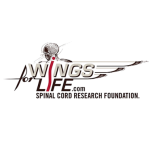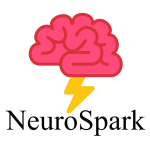Current Projects
Funding: National Institute of Health
Funding: National Institute of Health
Past Projects
Non-invasive spinal neuromodulation and robotic exoskeleton to recover upper limb function after spinal cord injury
Funding: Craig H. Neilsen Foundation
Training with Exoskeleton and Transcutaneous Spinal Stimulation in SCI
This study aims to evaluate a novel approach to spinal cord injury (SCI) rehabilitation. This approach involves combining robot-assisted step training (RAST) and transcutaneous spinal stimulation (TSS). A group of 6 spinal cord injury (SCI) patients will participate in the study. Each participant will initially complete 3 RAST training sessions in order to become familiar with walking in a robotic exoskeleton. They will then complete a series of 2 training phases, with 12 sessions in each phase. The 2 training phases will include 1) RAST, and 2) RAST + TSS. The duration of each session (up to 60 min) will gradually progress over the course of each training phase. Each participant will complete 3 – 4 training sessions per week. Assessments will be carried out before and after each training phase. Functional assessments will measure the level of motor control during walking, supported standing, and in a gravity neutral condition. Neurophysiological assessments will measure the excitability of the spinal cord.
Funding: The Methodist Hospital Foundation
Functional reorganization of brain-spinal connectivity after stroke using non-invasive spinal neuromodulation and robotic upper limb exoskeleton for neuromotor rehabilitation
The overall objective of this study is to improve and regain upper limb motor control in individuals with sensorimotor impairments after stroke, utilizing a combination of novel robotic exoskeleton technologies and non-invasive spinal neuromodulation.
Funding: NeuroSpark Seed Funding Program
Combining Transcutaneous Spinal Stimulation and Functional Electrical Stimulation for Regaining Self-Assisted Standing after spinal cord injury (SCI)
Funding: Wings for Life – Spinal Cord Research Foundation
Equipment
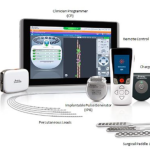
Epidural Spinal Stimulation
- Epidural paddle surgically placed into the epidural space using guided fluoroscopy
- A technique used to stimulate spinal nerves through implanted electrodes on top of spinal cord
- Can offer selective activation of different muscle groups
- Our lab employs ESS by optimizing the stimulation process through varying the conditioning-test intervals
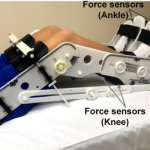
Exolab
- One-of-a-kind innovation made entirely from MRI friendly materials.
- Used in combination with EMGs to measure force output of stimulated muscle responses in lower limbs.
- Has the ability to have a participant in a resting or standing position. Adjustable to participant’s leg length and comfortable for long duration testing periods.
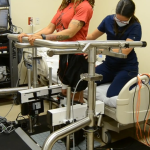
Stand Frame and Knee Assist
- Used to support SCI participants in rehabilitation exercises.
- Force data from knees, and hands can be collected through the sensors embedded within the frame.
- Knee brakes can be controlled from an iPad to run perturbation drills.
- A Wii board also works in tandem with the standing frame to collect standing force from feet when practicing arm float balancing, perturbation, and sit to stands.
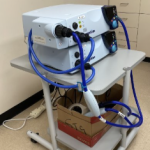
Transcranial Magnetic Stimulation (TMS)
- A Non-invasive neuromodulation stimulus.
- In our Lab we pair TMS with TSS or ESS and use various conditioning-test intervals (CTIs) such as stimulation sequences and delays.
- These assessments help to calculate the latency of response between the motor cortex and upper body.

Delsys EMG

LabChart
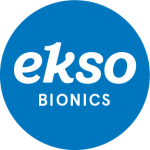
EKSO Bionics
Collaborators

Rice University
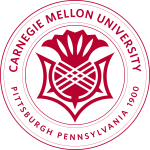
Carnegie Melon University

Texas A&M University

University of Alberta

University of Houston

University of Southern California

TIRR Memorial Hermann

ANEUVO

Toronto Rehab Center

Mayo Clinic
Funding Organizations
The National Institute of Neurological Disorders and Stroke (NINDS) is part of the U.S National Institutes of Health. It funds and conducts basic, translational, and clinical neuroscience research.
Craig H. Neilsen Foundation’s funding is dedicated to supporting both programs and scientific research to improve the quality of life for those living with spinal cord injury.
Wings for Life is a not-for-profit spinal cord research foundation. Our mission is to find a cure for spinal cord injury. We fund world-class scientific research and clinical trials around the globe aimed at healing the injured spinal cord.
NeuroSpark Seed Funding is intended to both build upon current neural regeneration research and also ‘spark’ novel interactions among Houston Methodist’s Centers of Excellence. Priority will be given to interdisciplinary projects in areas of emphasis that include regeneration and neuromodulation, systems and organ repair, acute neuroprotection and imaging biomarkers, and prosthetics and robotics.
At Houston Methodist, fostering innovations with the potential for clinical application is at the very heart of what we do. Our interdisciplinary teams of clinicians and researchers are committed to streamlining the process of translating discoveries into treatments and cures for our patients.


